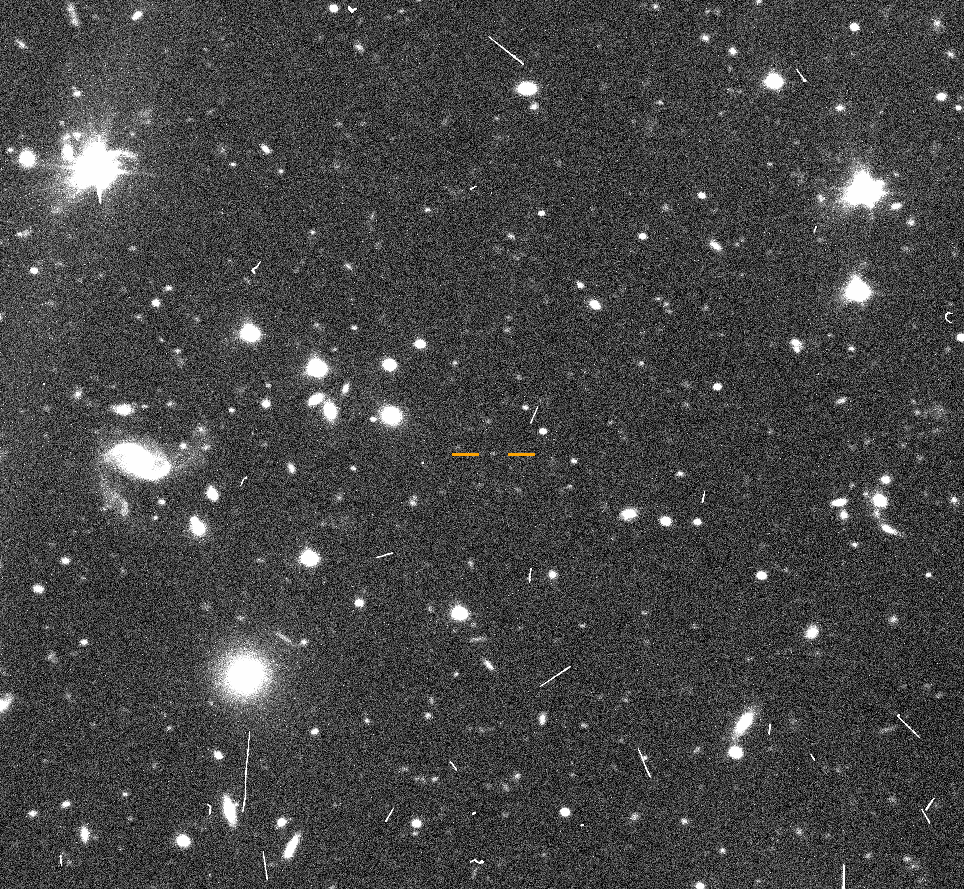'Farfarout' is most distant object in our solar system. But it's not Planet Nine.
This object is Earth's most distant known cousin.

Astronomers have identified the most distant known object in our solar system — a dwarf planet nicknamed Farfarout that orbits far beyond Pluto. This remote mini-planet swings so far away from the sun that from Farfarout's perspective Earth and Saturn look like neighbors.
With an orbit that's an average of 132 times the distance between Earth and the sun, or 132 astronomical units (AU), it beats "Farout," the previous record holder for most-distant solar object; Farout orbits the sun at an average of 124 A.U. Farfarout's technical name is 2018 AG37, and it will likely get an official name as a dwarf planet down the road.
While this space rock is big enough to take the classification "dwarf planet" and far, far out in the solar system, it's nowhere near massive enough to be Planet 9, the theoretical object astronomers were searching for when they found it. Planet 9 is believed to orbit well beyond Neptune, if it exists, and have a mass many times that of Earth's that has allowed it to stretch and warp the orbits of other outer-solar system objects with its gravity. Farfarout doesn't have the bulk to account for that stretching and warping.
Related: 5 reasons to care about asteroids
To get a sense of just how far away 132 AU is, consider the vast distance between Earth and Mars. As Live Science has reported, even during ideal conditions using a current NASA rocket the journey between the two planets would take months. But Mars orbits just 1.524 AU from the sun. Seen from Farfarout, the journey between Earth and Mars would look the same as a flight from Miami to Albuquerque would look to an observer on the moon.
Farfarout doesn't just hang out at 132 AU, however.
"A single orbit of Farfarout around the sun takes a millennium," David Tholen, an astronomer at the University of Hawaii and co-discoverer of Farfarout, said in a statement. "Because of this long orbital, it moves very slowly across the sky, requiring several years of observations to precisely determine its trajectory."
Sign up for the Live Science daily newsletter now
Get the world’s most fascinating discoveries delivered straight to your inbox.
Two years of observations have revealed that Farfarout's path around the sun creates a long ellipse. At its closest, Farfarout plunges to a mere 24 AU from the sun, closer to the sun than the orbits of Pluto and Neptune. But at its farthest, it reaches deep into space, 175 AU from the sun. That's about 0.06% of the journey to the nearest star.
The researchers estimate that Farfarout is about 25 miles (400 km) wide, which would make it among the smallest of the dwarf planets. It's likely, the researchers said, that more such objects will turn up as technology for detecting dim, distant rocks improves and researchers continue hunting for the mysterious Planet Nine.
Originally published on Live Science.










